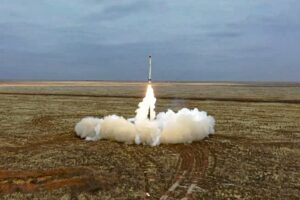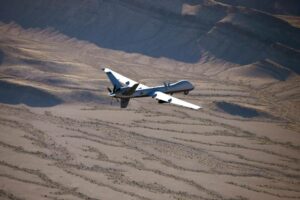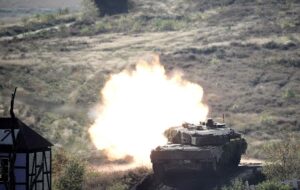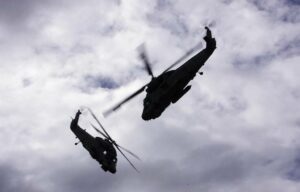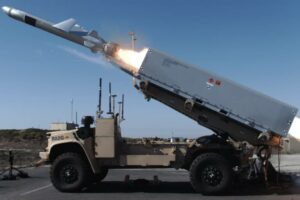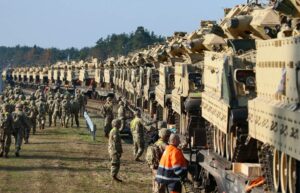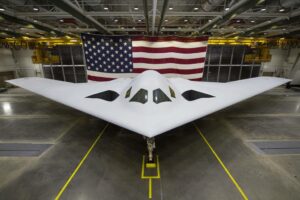WASHINGTON — The Australian, U.K. and U.S. trilateral security partnership known as AUKUS, often associated with the construction of nuclear-powered submarines, is also beginning to bear fruit in the fields of artificial intelligence and autonomy.
While the first pillar of the AUKUS agreement seeks to furnish Canberra with stealthy undersea vessels, the second, less talked-about pillar aims to foster leaps in all things digital: robotics, intelligence sharing, advanced computing and more.
“We’ve spent a lot of time, actually, over the last year or so, thinking about what AI cooperation with some of our closest allies and partners looks like,” Deputy Assistant Secretary of Defense for Force Development and Emerging Capabilities Michael Horowitz said Jan. 9 at an event hosed by the Center for Strategic and International Studies think tank. “Software is not, inherently, a barrier to cooperation with allies and partners.”
Among the AUKUS Pillar 2 advancements made thus far are the successful interplay of air and ground vehicles, including Blue Bear Ghost drones, Challenger 2 main battle tanks and a commercially hired FV433 Abbot self-propelled artillery gun, and the development of software that enables the sharing of submarine-hunting information over a vast region such as the Indo-Pacific.
“All three countries have P-8s. All three countries have sonobuoys,” Horowitz said, referencing the Boeing-made maritime patrol aircraft as well as sound sensors that float in the water to collect and relay data. “So our teams are working together on an algorithm that will let us gather data from U.K. and Australian sonobuoys, and vice-versa, that we can all roll out on our P-8s.”
The U.S. Defense Department years ago identified AI as a game-changer; the technology, officials say, can quickly parse otherwise overwhelming amounts of information, augment a commander’s decision-making process, and help reallocate precious manpower. The department in fiscal 2024 requested $1.8 billion for AI while juggling hundreds of related projects, including some tied to major weapons systems.
AI is also a critical piece of the Defense Department’s Combined Joint All-Domain Command and Control concept.
RELATED
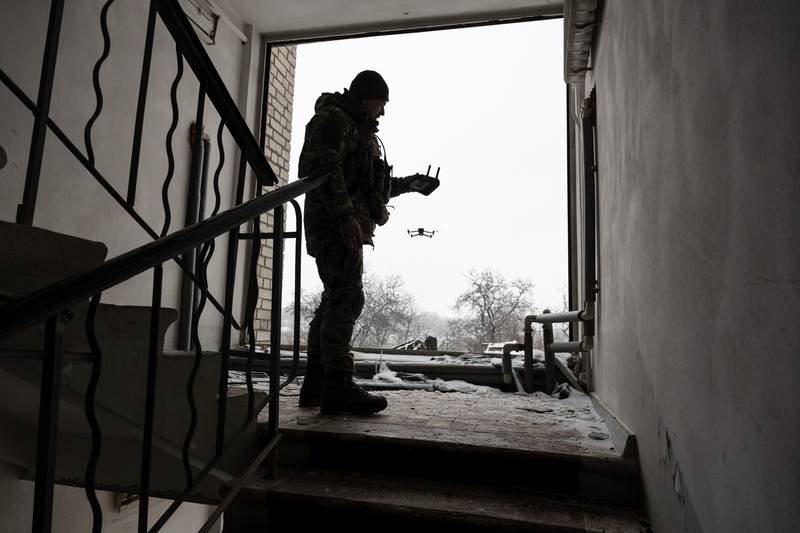
The latest iteration of CJADC2 envisions seamless information-sharing across land, air, sea, space and cyber, and in concert with international forces. The U.S. would work closely with the U.K. and Australia in a fight against Russia or China, demanding clear lines of communication and delegations.
By jointly developing AI and its underlying infrastructure, the U.K. Ministry of Defence said in May, the militaries can figure out interoperability now, and not later, when bullets are flying, while also reducing costs.
“Accelerating technological advances will deliver the operational advantages necessary to defeat current and future threats across the battlespace,” Lt. Gen. Rob Magowan, the U.K. deputy chief of defense staff for military capability, said in a statement at the time. “We are committed to collaborating with partners to ensure that we achieve this while also promoting the responsible development and deployment of AI.”
Colin Demarest is a reporter at C4ISRNET, where he covers military networks, cyber and IT. Colin previously covered the Department of Energy and its National Nuclear Security Administration — namely Cold War cleanup and nuclear weapons development — for a daily newspaper in South Carolina. Colin is also an award-winning photographer.
- SEO Powered Content & PR Distribution. Get Amplified Today.
- PlatoData.Network Vertical Generative Ai. Empower Yourself. Access Here.
- PlatoAiStream. Web3 Intelligence. Knowledge Amplified. Access Here.
- PlatoESG. Carbon, CleanTech, Energy, Environment, Solar, Waste Management. Access Here.
- PlatoHealth. Biotech and Clinical Trials Intelligence. Access Here.
- Source: https://www.defensenews.com/artificial-intelligence/2024/01/10/from-drones-to-sonobuoys-aukus-partners-betting-on-ai/
- :is
- :not
- :where
- 1
- 10
- 11
- 2000
- 2023
- 2024
- 70
- 8
- 9
- a
- About
- Achieve
- across
- actually
- administration
- advanced
- advancements
- advances
- advantages
- against
- ago
- Agreement
- AI
- aims
- AIR
- aircraft
- algorithm
- All
- also
- among
- amounts
- an
- and
- April
- ARE
- Army
- artificial
- artificial intelligence
- AS
- Assistant
- associated
- At
- augment
- Australia
- Australian
- Autonomy
- award-winning
- barrier
- Battle
- Bear
- Beginning
- Betting
- Billion
- Blue
- by
- CAN
- capabilities
- capability
- Carolina
- Center
- challenger
- chief
- China
- clear
- closely
- cold
- collaborating
- collect
- commercially
- committed
- Communication
- computing
- concept
- concert
- construction
- cooperation
- Costs
- countries
- covered
- covers
- critical
- Current
- cyber
- daily
- data
- Decision Making
- defence
- Defense
- Defense Department
- deliver
- demanding
- Department
- Department of Energy
- deployment
- deputy
- developing
- Development
- digital
- DJI
- drone
- Drones
- during
- emerging
- enables
- energy
- ensure
- envisions
- Ether (ETH)
- Event
- false
- far
- Feb
- field
- Fields
- fight
- Figure
- First
- Fiscal
- Float
- flying
- For
- Force
- Forces
- Foster
- from
- front
- future
- game-changer
- gather
- Gen
- Ghost
- Ground
- handful
- Have
- he
- help
- Horowitz
- http
- HTTPS
- Hundreds
- identified
- image
- images
- in
- Including
- information
- Infrastructure
- inherently
- Intelligence
- International
- Interoperability
- IT
- iteration
- ITS
- Jan
- joint
- jpg
- known
- Land
- Last
- Last Year
- later
- latest
- launches
- leaps
- less
- let
- like
- Line
- lines
- LOOKS
- Lot
- made
- Main
- major
- Maritime
- May..
- Michael
- militaries
- Military
- ministry
- more
- namely
- National
- Near
- necessary
- networks
- now
- nuclear
- Nuclear weapons
- of
- officials
- often
- on
- operational
- operator
- or
- otherwise
- our
- out
- over
- overwhelming
- partners
- Partnership
- photo
- photographer
- piece
- Pillar
- plato
- Plato Data Intelligence
- PlatoData
- Precious
- previously
- process
- projects
- promoting
- quickly
- reducing
- referencing
- region
- related
- Relay
- reporter
- requested
- responsible
- rob
- robotics
- Roll
- Russia
- russian
- s
- Said
- say
- Screen
- SEA
- seamless
- Second
- secretary
- security
- Seeks
- seen
- sensors
- sharing
- So
- Software
- some
- Sound
- South
- South carolina
- Space
- spent
- Staff
- Statement
- Strategic
- studies
- successful
- such
- Systems
- tank
- Tanks
- teams
- technological
- Technology
- Testing
- that
- The
- things
- think
- think tank
- Thinking
- this
- threats
- three
- Thus
- Tied
- time
- to
- together
- U.K.
- u.s.
- Ukrainian
- underlying
- us
- Vast
- Vehicles
- war
- Water
- we
- Weapons
- WELL
- What
- when
- while
- will
- with
- Work
- working
- would
- year
- years
- zephyrnet


